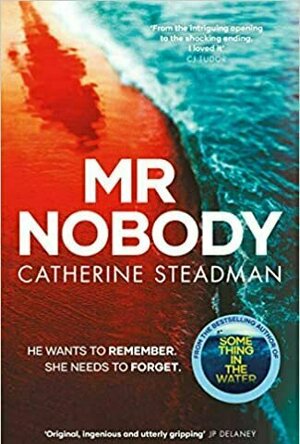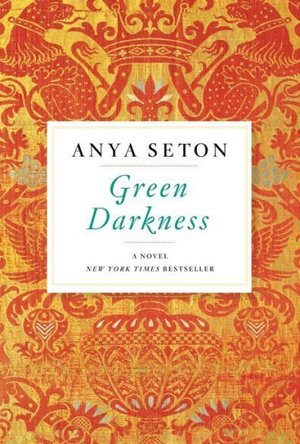Search
Deborah (162 KP) rated The Queen's Confidante in Books
Dec 21, 2018
The book has three mysteries at the heart - was Arthur Tudor really murdered (I confess this is a new theory to me and not sure how credible this is), what happened to the so-called Princes in the Tower and what became of Lord Lovell after the Battle of Stoke. Personally, I think the latter is done a great disservice here, based on the historical knowns of his character. Even so, what happens and with the hero and heroine's consent is pretty horrific - yes, I know the historical basis for this, but it doesn't do much good for liking the supposed protagonists! Also the rather melodramatic language as the book nears it's conclusion - monster, beast, devil - it just goes a bit over the top.
I could explain a bit more about why I wasn't keen on the book, but it would be difficult to do without spoilers, so I suppose I will leave that there. I will just say that I find it hard to credit that when Elizabeth Woodville came out of sanctuary in 1484 she didn't know what had happened to her sons and therefore one would assume that Elizabeth of York would also have known - and she was happy enough to be honoured at her uncle's court that Yuletide. Having the Elizabeth of this book rail against Yorkists when she came from what seemed a close family does seem to me to be somewhat absurd.
There are, also, a number of errors which could and should have been picked up. Another reviewer has already mentioned the note which is shown to two other people on one page and on the following page is apparently a secret! There are also TWO erroneous mentions of Richard duke of York, when the context is reasonably clear the person actually referred to is York's son, Richard Duke of Gloucester - elementary mistake that should not have been made!
Perhaps I have read too many non-fiction books about the period and have formed my own strong opinions to enjoy this book as much as some other reviewers. If it is going to be your 'thing' I can only give you my opinion and leave it to yourselves to determine.
I could explain a bit more about why I wasn't keen on the book, but it would be difficult to do without spoilers, so I suppose I will leave that there. I will just say that I find it hard to credit that when Elizabeth Woodville came out of sanctuary in 1484 she didn't know what had happened to her sons and therefore one would assume that Elizabeth of York would also have known - and she was happy enough to be honoured at her uncle's court that Yuletide. Having the Elizabeth of this book rail against Yorkists when she came from what seemed a close family does seem to me to be somewhat absurd.
There are, also, a number of errors which could and should have been picked up. Another reviewer has already mentioned the note which is shown to two other people on one page and on the following page is apparently a secret! There are also TWO erroneous mentions of Richard duke of York, when the context is reasonably clear the person actually referred to is York's son, Richard Duke of Gloucester - elementary mistake that should not have been made!
Perhaps I have read too many non-fiction books about the period and have formed my own strong opinions to enjoy this book as much as some other reviewers. If it is going to be your 'thing' I can only give you my opinion and leave it to yourselves to determine.

The Hiding Place / The Taking of Annie Thorne
Book
The thrilling second novel from the author of The Chalk Man, about a teacher with a hidden agenda...
Deborah (162 KP) rated The Mythology of Richard III in Books
Dec 21, 2018
As usual, Ashdown-Hill has given us a well-written and accessible book with an extensive index and bibliography and reasoning well backed up with factual evidence; I find his books are always worth reading an a refreshing change from a lot of the nonsense there is out there. In this particular book he looks at myths and legends, both old and rather worryingly modern, that surround one or our best known monarchs.
Early chapters deal with the mythology perpetuated by Tudor propagandists and blinkered 'traditionalists' despite lack of evidence in many cases and even explicit evidence to the contrary in others! He looks at how some stories, such as the 'body in the river' became perpetuated over time so that they eventually become accepted as 'truth' by the uninformed. Even I had taken rather at face value the story of the White/Blue Boar Inn, but as Ashdown-Hill points out, it would be much more logical for Richard III to have stayed at Leicester Castle, as he had on a previous occasion, and also there is no evidence that an inn with a boar in its name existed at all in Leicester at this time!
The latter part of the book deals with more modern myths and I was really rather saddened and disappointed that it was necessary to have to set the record straight on many aspect of the rediscovery of the king's grave. I completely understand Ashdown-Hill's need to do so. After reading his earlier book 'The Last Days of Richard III' I was thoroughly convinced by his well reasoned arguments and never for a moment did I seriously doubt that that is where Richard III's resting place was. I was almost ready to go and dig the car park up myself! Whatever the rights and wrongs of it, I did find all the arguments over a final resting place to be somewhat distasteful, with some people sinking very low in voicing their opinions. It is disheartening that a British University PR department is less interested in truth than in trying to keep all the kudos for itself and I hope that people will read this and know the truth. With all its apparent misinformation I doubt I will be bothering with the visitor centre in Leicester any more than I have bothered to visit the putative site of Bosworth.
Early chapters deal with the mythology perpetuated by Tudor propagandists and blinkered 'traditionalists' despite lack of evidence in many cases and even explicit evidence to the contrary in others! He looks at how some stories, such as the 'body in the river' became perpetuated over time so that they eventually become accepted as 'truth' by the uninformed. Even I had taken rather at face value the story of the White/Blue Boar Inn, but as Ashdown-Hill points out, it would be much more logical for Richard III to have stayed at Leicester Castle, as he had on a previous occasion, and also there is no evidence that an inn with a boar in its name existed at all in Leicester at this time!
The latter part of the book deals with more modern myths and I was really rather saddened and disappointed that it was necessary to have to set the record straight on many aspect of the rediscovery of the king's grave. I completely understand Ashdown-Hill's need to do so. After reading his earlier book 'The Last Days of Richard III' I was thoroughly convinced by his well reasoned arguments and never for a moment did I seriously doubt that that is where Richard III's resting place was. I was almost ready to go and dig the car park up myself! Whatever the rights and wrongs of it, I did find all the arguments over a final resting place to be somewhat distasteful, with some people sinking very low in voicing their opinions. It is disheartening that a British University PR department is less interested in truth than in trying to keep all the kudos for itself and I hope that people will read this and know the truth. With all its apparent misinformation I doubt I will be bothering with the visitor centre in Leicester any more than I have bothered to visit the putative site of Bosworth.
IT
Innocent Traitor
Book
I am now a condemned traitor . . . I am to die when I have hardly begun to live. Historical...

Mr. Nobody
Book
When a man is found on a Norfolk beach, drifting in and out of consciousness, with no identification...
If you thought a modern retelling of [b:Pride and Prejudice|1885|Pride and Prejudice|Jane Austen|https://d.gr-assets.com/books/1320399351s/1885.jpg|3060926]--set mainly in present day Cincinnati--didn't exactly sound like a page-turner, no one could exactly blame you. But, nonetheless, you'd be quite wrong. Sittenfeld's novel imagines the Bennet family in our modern times; Mr. and Mrs. Bennet live in a rambling Tudor home in Cincinnati: broke and somewhat clueless as their house crumbles around them. Mrs. Bennet spends her time clucking around her five unmarried daughters: Jane, Liz, Mary, Kitty, and Lydia. The book revolves mainly around the perspective of Liz, a magazine writer in her upper thirties living in New York City. She and Jane, also in NYC, return home to their parents and younger sisters after Mr. Bennet has a heart attack, only to find the house and the family in a bit of a shambles.
The book is amazing. It's been a while since I read [b:Pride and Prejudice|1885|Pride and Prejudice|Jane Austen|https://d.gr-assets.com/books/1320399351s/1885.jpg|3060926], but even I can tell you that the novel does an excellent job of following the original plot without being annoying or cloying. It's [b:Pride and Prejudice|1885|Pride and Prejudice|Jane Austen|https://d.gr-assets.com/books/1320399351s/1885.jpg|3060926] with lesbians and hate sex! The book comes across as familiar yet new, allowing you to ache, laugh, and rage at what feels like a group of old friends.
Mr. Bennet is a trip, even while having a heartbreaking sadness and sweetness at his core (though some of his zingers are priceless). The younger sisters are as (nearly) vapid as to be expected--truly awful at times--for much of the book. But seriously, Lydia and Kitty loving CrossFit? It's awesome. And Liz is wonderful; you will adore this surprisingly realistic and modern Liz, with all of her foibles and issues: a truly modern Liz struggling mightily to keep her family together and afloat.
As for Darcy, well he's as Darcy as ever. Somehow Sittenfeld has managed to truly capture the essence of Austen's Darcy and Elizabeth in her new characters. I don't know how, but it's funny and lovely all at the same time. (Side note: As a woman in her early thirties, will I ever be able to read about Darcy without picturing Colin Firth? I now have a desperate need to watch the BBC/A&E mini-series again.)
Overall, I found this book funny, touching, and compulsively readable. The characters are truly characters: they are fully formed within moments of picking up the book. The city of Cincinnati makes a great guest appearance, with the city playing a prominent role in many scenes (hi Skyline Chili!). If you loved the original, you'll find this updated version enjoyable and imaginative, with a surprising depth behind it. If you've never read Austen's work (and you should), you will still discover a funny, sweet yet weighty story of a family trying to make it in this day and age. Highly recommended (4.5 stars).
I received an ARC of this novel from Netgalley (thank you!); it is available for U.S. publication on 4/19/16. You can check out a review of this novel and many others on my <a href="http://justacatandabookatherside.blogspot.com/">blog</a>;.
The book is amazing. It's been a while since I read [b:Pride and Prejudice|1885|Pride and Prejudice|Jane Austen|https://d.gr-assets.com/books/1320399351s/1885.jpg|3060926], but even I can tell you that the novel does an excellent job of following the original plot without being annoying or cloying. It's [b:Pride and Prejudice|1885|Pride and Prejudice|Jane Austen|https://d.gr-assets.com/books/1320399351s/1885.jpg|3060926] with lesbians and hate sex! The book comes across as familiar yet new, allowing you to ache, laugh, and rage at what feels like a group of old friends.
Mr. Bennet is a trip, even while having a heartbreaking sadness and sweetness at his core (though some of his zingers are priceless). The younger sisters are as (nearly) vapid as to be expected--truly awful at times--for much of the book. But seriously, Lydia and Kitty loving CrossFit? It's awesome. And Liz is wonderful; you will adore this surprisingly realistic and modern Liz, with all of her foibles and issues: a truly modern Liz struggling mightily to keep her family together and afloat.
As for Darcy, well he's as Darcy as ever. Somehow Sittenfeld has managed to truly capture the essence of Austen's Darcy and Elizabeth in her new characters. I don't know how, but it's funny and lovely all at the same time. (Side note: As a woman in her early thirties, will I ever be able to read about Darcy without picturing Colin Firth? I now have a desperate need to watch the BBC/A&E mini-series again.)
Overall, I found this book funny, touching, and compulsively readable. The characters are truly characters: they are fully formed within moments of picking up the book. The city of Cincinnati makes a great guest appearance, with the city playing a prominent role in many scenes (hi Skyline Chili!). If you loved the original, you'll find this updated version enjoyable and imaginative, with a surprising depth behind it. If you've never read Austen's work (and you should), you will still discover a funny, sweet yet weighty story of a family trying to make it in this day and age. Highly recommended (4.5 stars).
I received an ARC of this novel from Netgalley (thank you!); it is available for U.S. publication on 4/19/16. You can check out a review of this novel and many others on my <a href="http://justacatandabookatherside.blogspot.com/">blog</a>;.
Acanthea Grimscythe (300 KP) rated Green Darkness in Books
May 16, 2018
Having picked <i>Green Darkness</i> up from the local library bookstore sale for only a quarter, I truly had no idea what I was getting myself into. Historical fiction, in any form, is not a genre that I've spent much time with, and coupling that with paranormal romance? Well, we can safely say that I was in for a ride.
<i>Green Darkness</i> shares the harrowing tale of forbidden love in mid-1500s England between an unfortunate peasant girl and a Benedictine monk, betwixt the reigns of King Edward VI, Queen Mary I, and Queen Elizabeth - a time when Catholicism and Protestantism (depending on the ruler) were met with persecution. It doesn't begin in that era, however; rather, the story starts in the 1960s, when Celia and her newly wedded husband, Richard Marsdon, arrive at his family's ancestral estate in Sussex. A baffling illness befalls the Marsdons, leaving the unorthodox physician, Doctor Akananda, to unravel the mysterious past that haunts the pair from hundreds of years before.
The twisting tale that unravels of that love affair is only a small part of what I enjoyed about this book, as romance is not typically my cup of tea. What truly enticed me was [a:Anya Seton|18930|Anya Seton|https://d.gr-assets.com/authors/1224813438p2/18930.jpg]'s faithfulness not only to history, but to location, legend, and use of historical figures. Cowdray House and Ightham Mote are real places, and an unfounded rumor regarding the Mote suggests that a female skeleton was found within its walls - which Seton used as a basis for her story. Through Seton, I discovered an unknown love for Tudor England, and undoubtedly I will read more books set in that time period.
Despite my praise for the book, I was unable to give it a five star rating because of its conclusion: it was as if Seton ran out of fuel. The idea of reincarnation takes a more ridiculous turn when Doctor Akananda hints at more pasts that conveniently interlock the same people. As if that were not enough of an affront, the resolution itself fell flat. With the Marsdon family tragedy conveniently wrapped up, Celia and Stephen seem aloof and their interaction felt a bit too forced. It is for this reason that I gave the book four stars.
<i>Green Darkness</i> shares the harrowing tale of forbidden love in mid-1500s England between an unfortunate peasant girl and a Benedictine monk, betwixt the reigns of King Edward VI, Queen Mary I, and Queen Elizabeth - a time when Catholicism and Protestantism (depending on the ruler) were met with persecution. It doesn't begin in that era, however; rather, the story starts in the 1960s, when Celia and her newly wedded husband, Richard Marsdon, arrive at his family's ancestral estate in Sussex. A baffling illness befalls the Marsdons, leaving the unorthodox physician, Doctor Akananda, to unravel the mysterious past that haunts the pair from hundreds of years before.
The twisting tale that unravels of that love affair is only a small part of what I enjoyed about this book, as romance is not typically my cup of tea. What truly enticed me was [a:Anya Seton|18930|Anya Seton|https://d.gr-assets.com/authors/1224813438p2/18930.jpg]'s faithfulness not only to history, but to location, legend, and use of historical figures. Cowdray House and Ightham Mote are real places, and an unfounded rumor regarding the Mote suggests that a female skeleton was found within its walls - which Seton used as a basis for her story. Through Seton, I discovered an unknown love for Tudor England, and undoubtedly I will read more books set in that time period.
Despite my praise for the book, I was unable to give it a five star rating because of its conclusion: it was as if Seton ran out of fuel. The idea of reincarnation takes a more ridiculous turn when Doctor Akananda hints at more pasts that conveniently interlock the same people. As if that were not enough of an affront, the resolution itself fell flat. With the Marsdon family tragedy conveniently wrapped up, Celia and Stephen seem aloof and their interaction felt a bit too forced. It is for this reason that I gave the book four stars.
graveyardgremlin (7194 KP) rated The Other Countess (The Lacey Chronicles, #1) in Books
Feb 15, 2019
THE OTHER COUNTESS is a sweet and harmless love story set in Tudor England during the reign of Queen Elizabeth I, in the year of 1582 to be exact. Lady Eleanor Rodriguez, Countess of San Jaime, is our penniless heroine who is saddled with her absent-minded alchemist father; the roles of child and parent have been long since been reversed. The preface, which takes place in 1578, gives us our first glimpse of William Lacey, the new Earl of Dorset at age fourteen, as he throws a twelve-year-old Ellie and her father off his land.
The story itself isn't exactly original and doesn't go into any unfamiliar territory, but it's ably told and fairly inoffensive, making it suitable for older teens (there are numerous allusions to sexual situations but that's as far as it goes). The dialogue and sensibilities are more modern in nature and don't always ring true to the era, but some liberties are always taken in young adult fiction, therefore making it something I can forgive. Very light on historical content, this is more for the romantics out there who like a historical backdrop to a love story. For the first half, I wasn't very involved into either the characters or their story, and it didn't help that it moved at a slow pace, though at the halfway point it picked up and started charming me. However, the hero and heroine were a little too perfect, more so in Ellie's case, as she didn't seem to really have any negative attributes other than she has a bit of a temper. Maybe if they had a few more rough edges I would have rooted for them to have their happy ending, as it is, I wasn't that invested. I do think that the secondary character, Lady Jane Perceval, has promise on that front since her narrative had a more realistic feel to it, so I may just pick up her story when it comes out ([b:The Queen's Lady|8805112|The Queen's Lady (The Lacey Chronicles, #2)|Eve Edwards|http://photo.goodreads.com/books/1327950501s/8805112.jpg|13679272]). The resolution to Will and Ellie's story came far too easily and some more conflict would have made it much better. Still, as I said, it's a sweet story, even if nothing sets it apart from other books. An easy read that should appeal to teenage girls.
The story itself isn't exactly original and doesn't go into any unfamiliar territory, but it's ably told and fairly inoffensive, making it suitable for older teens (there are numerous allusions to sexual situations but that's as far as it goes). The dialogue and sensibilities are more modern in nature and don't always ring true to the era, but some liberties are always taken in young adult fiction, therefore making it something I can forgive. Very light on historical content, this is more for the romantics out there who like a historical backdrop to a love story. For the first half, I wasn't very involved into either the characters or their story, and it didn't help that it moved at a slow pace, though at the halfway point it picked up and started charming me. However, the hero and heroine were a little too perfect, more so in Ellie's case, as she didn't seem to really have any negative attributes other than she has a bit of a temper. Maybe if they had a few more rough edges I would have rooted for them to have their happy ending, as it is, I wasn't that invested. I do think that the secondary character, Lady Jane Perceval, has promise on that front since her narrative had a more realistic feel to it, so I may just pick up her story when it comes out ([b:The Queen's Lady|8805112|The Queen's Lady (The Lacey Chronicles, #2)|Eve Edwards|http://photo.goodreads.com/books/1327950501s/8805112.jpg|13679272]). The resolution to Will and Ellie's story came far too easily and some more conflict would have made it much better. Still, as I said, it's a sweet story, even if nothing sets it apart from other books. An easy read that should appeal to teenage girls.


